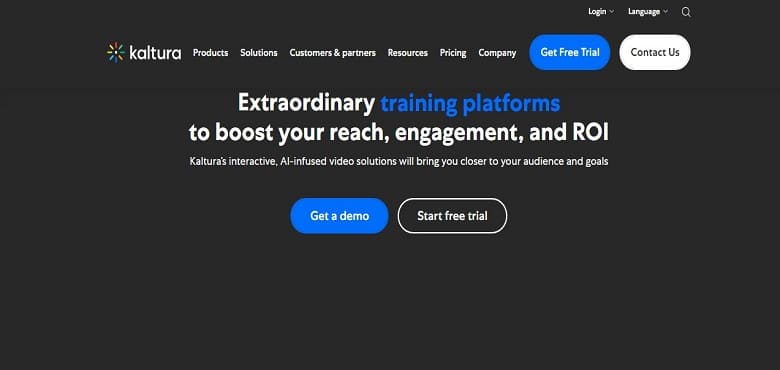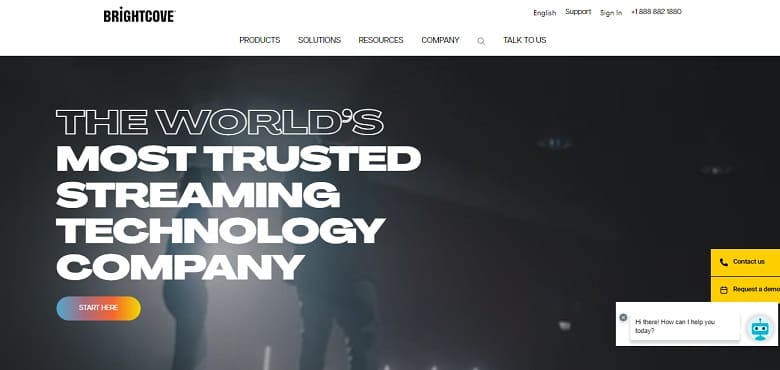So, think about this: you’re at your favorite coffee shop, sipping your coffee, and your laptop is open in front of you. But rather than just scrolling through social media or catching up on your emails, you’re attending a live class on an online video education streaming platform.
Your professor is across the world, yet it feels like they’re sitting right before you. They’re explaining concepts, answering your questions, and interacting with you in real-time.
Sounds pretty convenient, right? Well, that’s the beauty of using video platforms for education.
In this blog, we’ll explain the concept of live streaming in education. You’ll learn why you need to start creating educational content for your audience and some of the top live-streaming services for education.
But let’s start with the basics. What exactly is live streaming in education?
What is Live Streaming in Education?
It is a simple virtual classroom where lectures, discussions, and even group work happen online.
The explosion of online video education platform has progressed over the years and the global e-learning market is expected to reach $848.1 billion by 2030.
If you think about this, it’s not surprising to see why this explosion is happening. Live streaming is a very interactive experience. Your students get to:
- See you (their instructor)
- Interact with their classmates and
- Participate in lessons from the comfort of wherever they are
And this isn’t even the best part. Soon, we’ll see more innovations like Augmented Reality (AR) and Virtual Reality (VR) in education. Students can explore ancient ruins in a history class or maybe even 3D models of a cell in biology.
These are just a few of the things that’ll happen in the near future. While we wait for these things, let’s return to what we currently have – live streaming in education.
Importance of Education Streaming Solutions
First of all, there’s a lot more to online education than just convenience.
So, what are the other importance of live streaming in online education? Well, keep reading to find out.
- Bridging the Distance: With education streaming solutions, physical distance is no longer a barrier. Students can build strong connections and create a lasting network of friends with people from different cultures.
- Real-Time Collaboration: Many educational video streaming services provide breakout rooms and live chat tools. These features help students engage with their teacher, ask questions, and get immediate feedback.
- Flexibility and Convenience: With live video streaming for education, viewers can join into classes from pretty much anywhere. It doesn’t matter if they’re at home, traveling, or just taking a break from work.
- Cost-Effective Solution: We can’t deny the fact that education is expensive. But thankfully, some educational streaming services offer free or affordable courses that can provide the same level of education as more expensive, traditional institutions.
- Personalized Learning Experience: Instructors can now use educational video streaming services data like course attendance records and test scores, to understand how their students engage with their teaching methods.
- Continuous Learning Opportunities: One of the biggest benefits of live streaming for education is that the learning doesn’t stop when the class ends. This is especially helpful for complex subjects where students might need to go back to the online video education platform and review some topics.
- Scalability and Reach: Live video streaming for education isn’t just beneficial to students. It’s also a great way for creators and schools to reach a larger audience than they would with traditional, in-person classes.
So, we’ve talked a lot about the benefits and importance, we also chipped in certain features that make live streaming services for education beneficial.
This brings us to the question: Where can you find these features? Online platforms and live streaming services for education.
The 3 Best Video Platforms for Education
Alright, so you’re sold on the idea of live streaming in education. But where do you start? Don’t worry. We’ve got you covered.
There are plenty of platforms out there, but here are the best three online video platforms for education:
VPlayed
VPlayed lets you broadcast live events to a global audience. With features like educational video on demand, your audience can revisit lectures, review materials, and continue learning long after your live session has ended.
What does this mean for you?
It simply means you can reinforce what you’ve taught and help your audience learn at their own pace. This helps them retain information and deepen their understanding of the topic.

VPlayed: #1 Solution To Stream, Distribute & Monetize Videos
You can also:
- Monetize your video
- Upload, organize, and manage your content
- Secure and encrypt your video and live streams
- Check out real-time analytical reports
- Encode and transcode your videos faster
Kaltura
Kaltura is another super cool platform. You can create, manage, and distribute video content, including livestreams.

You can also create a virtual classroom that is as engaging as in-person. The people you teach can attempt quizzes and interact with each other in real time.
Kaltura can also integrate with the most LMS platforms, allowing you to easily add video content to your existing setup.
Brightcove
Brightcove is quite popular when it comes to educational video streaming.

You can use the platform to host live classes, manage tons of video content, or even monetize your educational content using ads.
The platform contains features like live video streaming, video hosting, and analytical tools. Plus, it integrates smoothly with other content management systems you might be using,
Conclusion
So, there you have it—everything you need to know about the benefits of education streaming solutions. And now that you know these things, it’s time to start creating your content.
With the top 3 video platforms for education listed in this blog, getting started is now easier than ever. What else are you waiting for? Grab your coffee, set up your space, and start creating content.





